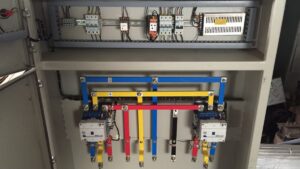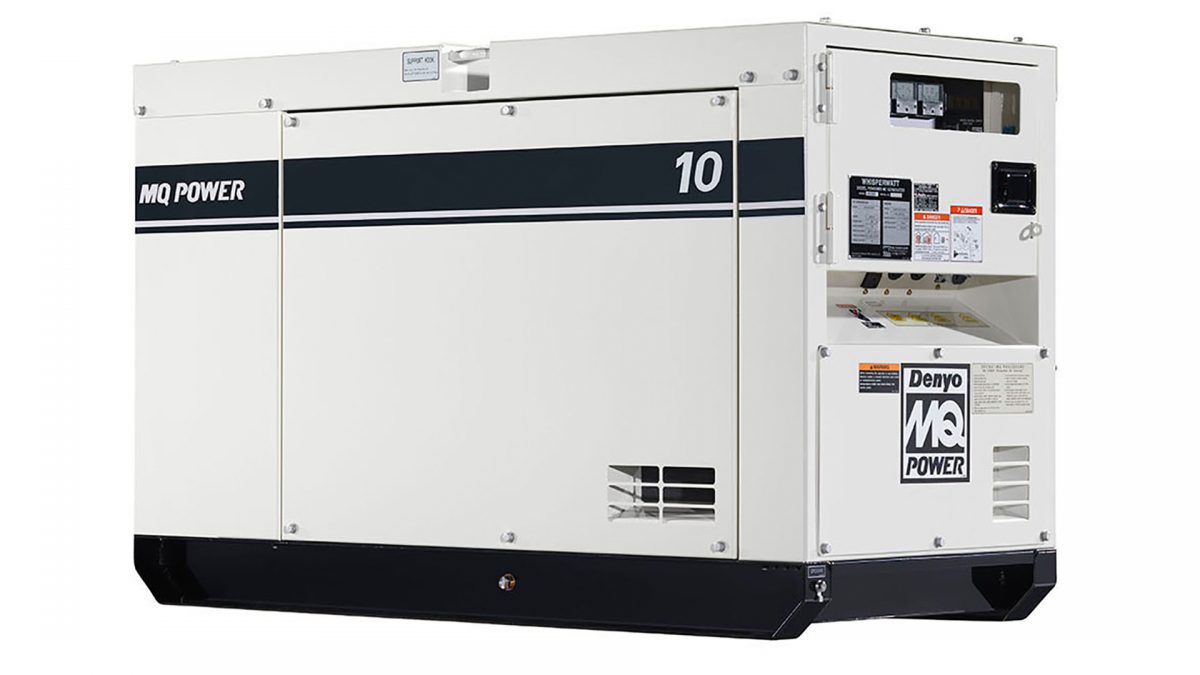

Generator synchronization is the way toward coordinating with boundaries like the voltage, recurrence, stage point, stage succession, and waveform of the alternator sync panel generator or another source with a sound or running force framework. This is done before the generator is reconnected to the force framework. When a generator is synchronized with the boundaries of another generator, alternator, or transport bar, the framework can run easily once more.
Generator synchronization to a power system must be conducted carefully to prevent damage to the unit, as well as the power system itself. When synchronizing a generator to a power system, the frequency and voltage of the generator must match closely. The rotor angle and the instantaneous power system phase angle must be close prior to closing the generator breaker and connecting the isolated generator to a power system.
In the majority of cases for generator synchronization, the synchronization process is automated via an automatic synchronizer with manual control capabilities that can be used in backup situations. Synchronizing panels generally indicate any adjustments that the operator should make in regards to the governor and excitement and when it’s deemed acceptable to close the breaker.
A generator cannot deliver power to an electrical power system unless all the aforementioned parameters exactly match those of the network. The need for synchronization arises when two or more alternators work together to supply the power to the load. Since electrical loads do not remain constant, the two or more generators supplying the power need to be interconnected and operate in parallel to handle larger loads.
In most commercial power plants, several small units supply the power rather than a single large unit. This is called as parallel operation of generators. The reasons for preferring this practice are enumerated.
Several small units are more reliable than a single large unit. This is because, if one alternator is failed, other alternators are still active and hence the whole system will not be shut down.
In case of periodic maintenance, break-down, or repairs of one alternator, it must be shut down and removed from service. Since the other machines are operating in parallel, the interruption to supply the load is prevented.
The load requirements in the central station change continuously. During light-load periods only one or two generators are operated to supply the load demands. During peak-load demands, other alternators are connected in parallel to meet the demand.
Generators run most efficiently when they are loaded at their rated values. Due to the operation of few generators at light-loads and more generators at high peak loads efficiently loads the generators.
As the demand for electric power is increasing continuously, utility companies have been increasing the physical size of the generating plants by adding more alternators. So these alternators have to be connected in parallel with the existing generator equipment.
The phase sequence of the three phases of the alternator which is being connected to the power system bus must be the same as the phase sequence of the three phases of the bus bar (or electric grid). This problem comes mainly in the event of initial installation or after maintenance.
The RMS voltage of the incoming alternator should be the same as the RMS voltage of the bus bar or electric grid. If the incoming alternator voltage is more than the bus bar voltage, there will be a high reactive power that flows from the generator into the grid.
If the incoming alternator voltage is lower than the bus bar voltage, the generator absorbs the high reactive power from the bus bar.
The frequency of the incoming generator must be equal to the frequency of the bus bar. Improper matching of frequency results in high acceleration and deceleration in the prime mover that increases the transient torque.
The phase angle between the incoming generator voltage and voltage of the bus bar should be zero. This can be observed by comparing the occurrence of zero-crossing or peaks of the voltage waveforms.
When the above-stated methods are fulfilled, the alternators are said to be in synchronism. The actual process of synchronization or paralleling generators includes the following steps.
There are different techniques being available for the synchronization of alternators. The primary purpose of these techniques is to check all four conditions discussed above. The common methods used for synchronizing the alternators are given below.
Curabitur ac leo nunc vestibulum.
Premier Engineering & Services, better known as, PES, flaunts an ISO certified status with various other local and international certifications in its arsenal. Our company traces its roots back to 2016, spearheaded by a team of professionals eager to serve the Energy Sector of Pakistan through exceptional solutions.



Premier Engineering & Services ,
8, Civic Centre Mustafa Town, Lahore, Pakistan
NTN # 7282071-0 | STRN # 32-77-8761-312-71 | D&B D-U-N-S: 645829040

Our company “Premier Engineering & Services” is committed to fulfill both statutory and regulatory requirements and quality requirements of customer. To meet this obligation, the company will continue reviewing the system for its continued suitability of the quality management system. The policy will be communicated, implemented and maintained at all levels of the organization. Appropriate resources of the company will be directed towards achieving the quality goals through employee’s participation.

Our company “Premier Engineering & Services” is committed to fulfill both statutory and regulatory requirements and quality requirements of customer. To meet this obligation, the company will continue reviewing the system for its continued suitability of the quality management system. The policy will be communicated, implemented and maintained at all levels of the organization. Appropriate resources of the company will be directed towards achieving the quality goals through employee’s participation.